Books
19 Art Books That Spoke Volumes in 2023
Great art novels and art-history tomes, as lovingly selected by the Artnet News staff.
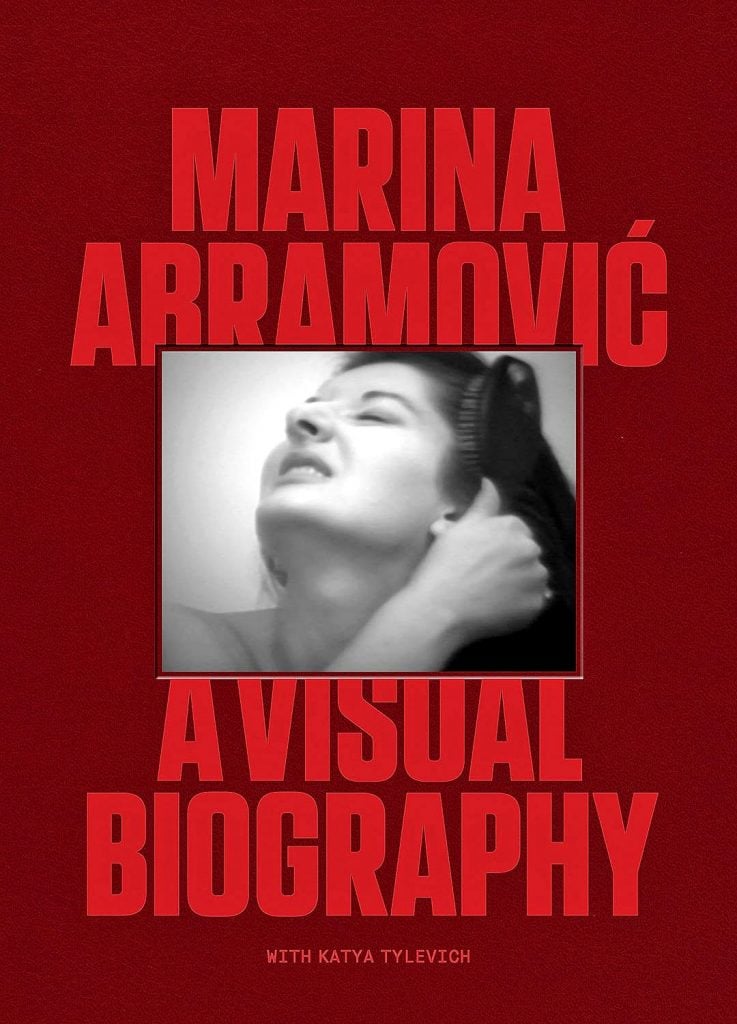
You’re busy during the holidays, we get it. It’s not easy carving out time to read, and even harder to decide what to read. So, our gift to you is this list of picks for some of the best art books published in 2023. All you have to do is, well, read them.
The books range from a survey of Indigenous art-making today, edited by the U.S.’s 2024 Venice Biennale artist Jeffrey Gibson, to a look at the history of Venice itself, that perennial culture of capital.
And there are plenty of books in between, too, including deep dives into the life and work of icons such as Leonora Carrington, Claude Monet, and Camille Pissarro. We’ve even got a couple of art-focused novels in the mix.
There’s no shortage of material to dig into during the holidays and beyond. We wish you good tidings and happy reading.
Art Monsters: Unruly Bodies in Feminist Art
By Lauren Elkin
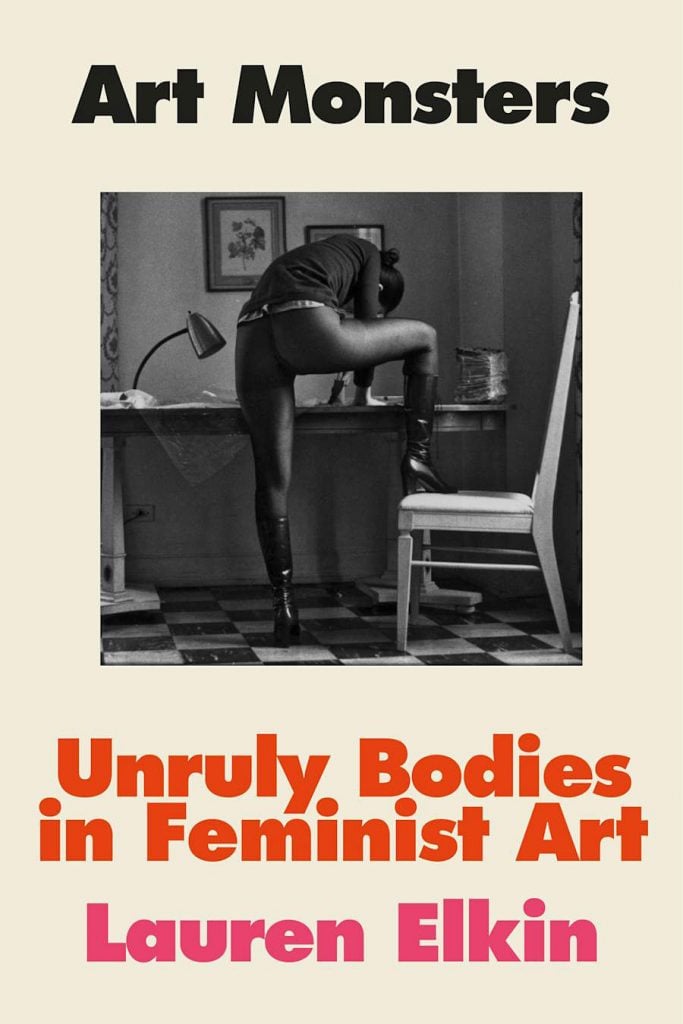
Art Monsters: Unruly Bodies in Feminist Art by Lauren Elkin. Courtesy of Macmillan.
There has, in recent years, been no shortage of new books surveying art history’s many overlooked women. Nonetheless, Elkin has managed to serve up something new. This in-depth examination of how experimental artists like Eva Hesse, Carolee Schneemann, and Kara Walker have expressed women’s bodily experiences strikes at the very core of what makes feminist art so thrillingly defiant and radically unconcerned with palatability. The text itself is also unafraid to go against convention, boldly interspersing sections of serious scholarly criticism with pieces of memoir that reflect on her own personal attachment to these women’s work.
—Jo Lawson-Tancred
Joan Mitchell: By Her Friends
By Guy Bloch-Champfort
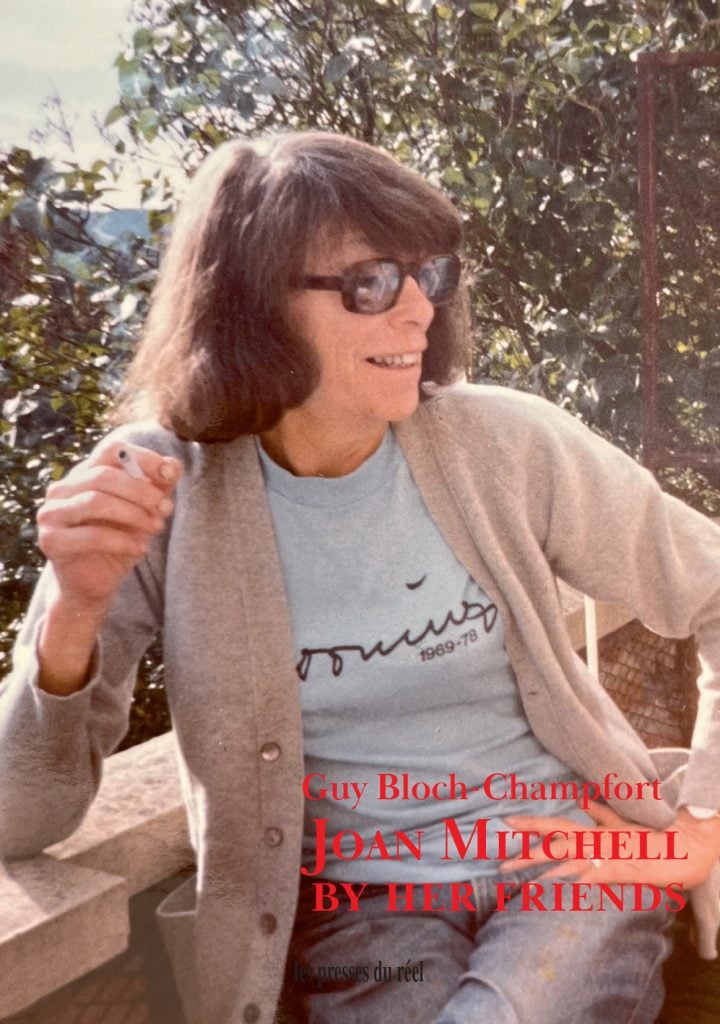
Joan Mitchell: By Her Friends by Guy Bloch-Champfort. Courtesy of Les Presses du Réel.
Joan Mitchell is finally getting her due as one of the 20th century’s greatest artists, including this fascinating little tome featuring interviews with the artists, dealers, and collectors who knew her, conducted by her friend, the writer and lawyer Guy Bloch-Champfort. The portrait painted by these reminiscences isn’t always flattering—Mitchell could be cruel, especially when drinking—but her tough-as-nails persona was part of what ensured her success in the male-dominated world of Abstract Expressionism. Those sharing memories of Mitchell include her longtime gallerist John Cheim and the late artists Brice Marden and Joyce Pensato.
—Sarah Cascone
An Indigenous Present
Edited by Jeffrey Gibson

An Indigenous Present, edited by Jeffrey Gibson. Courtesy of DelMonico Books.
This striking volume aims to give a view of Indigenous art-making today through conversations with some 60 artists, writers, filmmakers, choreographers, and other creatives of Indigenous heritage. The ambitious tome was conceived by American artist Jeffrey Gibson, who is of Mississippi Choctaw and Cherokee descent—a notable choice, as Gibson will also become, in 2024, the first Native American artist to represent the U.S. at the Venice Biennale with a solo exhibition. In its totality, An Indigenous Present focuses on these artists’ practices while bringing to light shared stories, connections, and traditions through a transcultural and contemporary lens. Featured artists include Wendy Red Star, Jaune Quick-to-See Smith, and Brad Kahlhamer.
—Katie White
Marina Abramovic: A Visual Biography
By Marina Abramovic and Katya Tylevich

A Visual Biography by Marina Abramović and Katya Tylevich. Courtesy of MIT Press.
Marina Abramović has published many books over the years, from art catalogues to her 2016 memoir Walk Through Walls, but what makes A Visual Biography a must-have for fans is its sheer volume and comprehensiveness. Branded as “the definitive guide to the life and work” of the world’s most famous performance artist, this hulking 496-page retrospective was published to coincide with Abramović’s survey show at the Royal Academy of Arts, the London institution’s first major exhibition of a female artist in its 255-year history. The artist collaborated with her friend and author Katya Tylevich, who took 17 months to interview the artist, retracing the footsteps of her life journey and artistic trajectory, and how she evolved into the figure who transformed the art world with her performances. The book also comes with more than 600 images from the artist’s personal archive, which makes this title an ideal gift for the holiday season.
—Vivienne Chow
Thunderclap: A Memoir of Art and Life and Sudden Death
By Laura Cumming
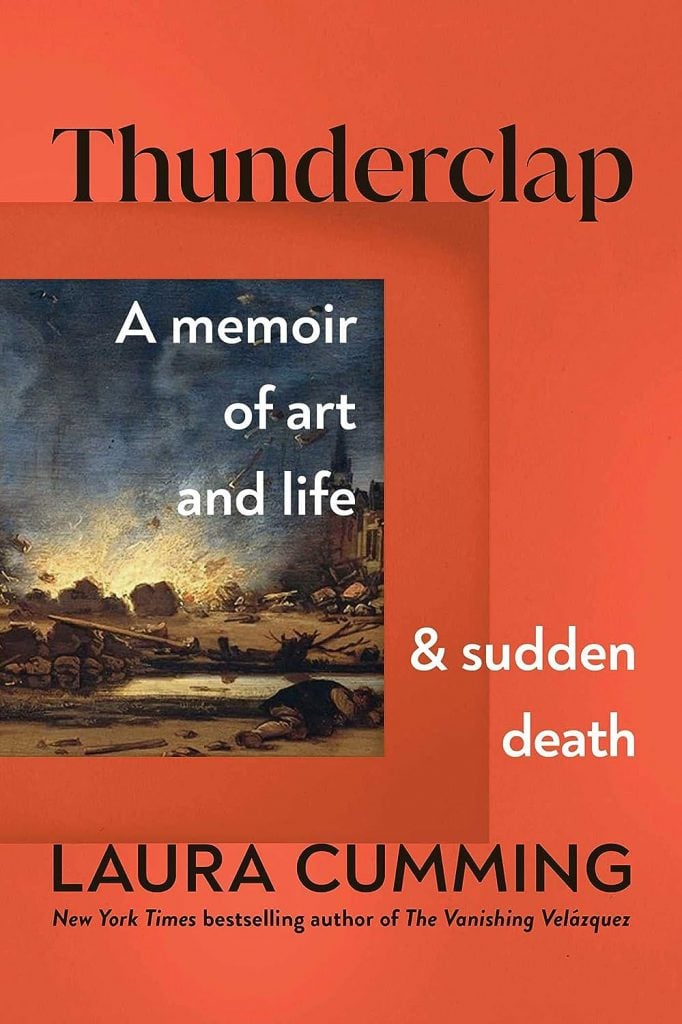
Thunderclap: A Memoir of Art and Life and Sudden Death by Laura Cumming. Courtesy of Simon & Schuster.
In 1654, a cellar in Delft, which the city government had been using as a storehouse for 80,000 pounds of gunpowder, exploded, injuring thousands and leaving 100 people dead. Among them were painter Carel Fabritius. The traumatic event became known as the Delft Thunderclap. Critic Laura Cummings delves into the event by framing her story around the life of Fabritius while also dwelling on personal details about her own father. Her writing mirrors the practice of Dutch art by focusing on the tiniest of details—the blue in a tile, or the color of feathers on a bird on a perch—to get at the impact of a painting and how it can shape and inspire a view of the world.
—Eileen Kinsella
Monet: The Restless Vision
Jackie Wullschläger
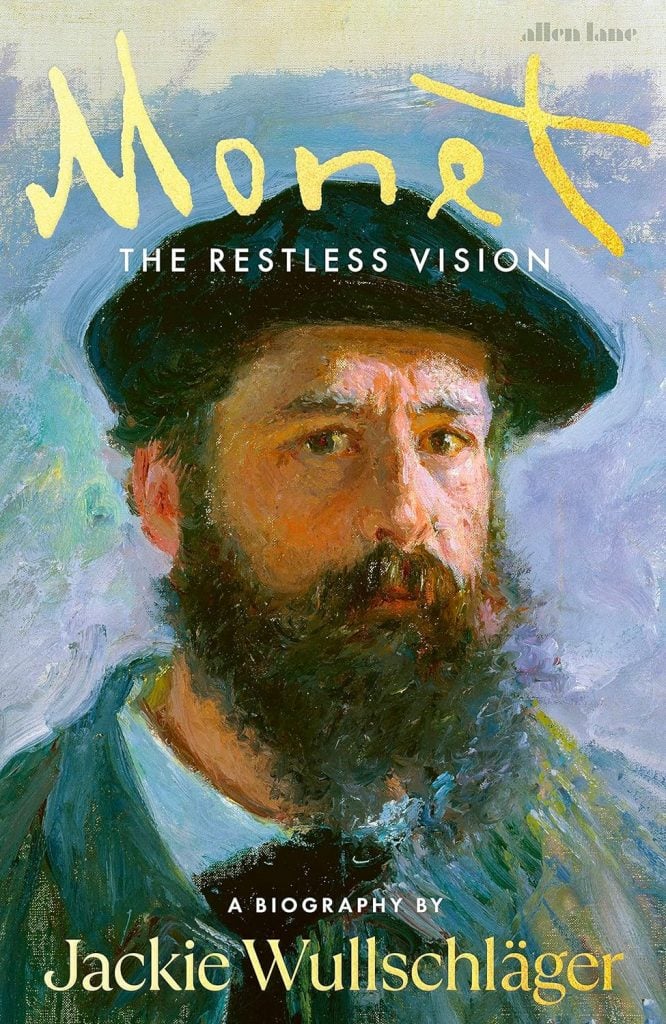
Monet: The Restless Vision by Jackie Wullschläger. Courtesy of Penguin.
Anyone who has followed Wullschläger’s amazing writing and art criticism over the years will probably not be surprised to find that her deep dive into the life of the great Claude Monet is both comprehensive and engrossing, and has been aptly described as a “tour de force.” And anyone who has marveled at Monet’s dreamlike waterlilies, haystacks, views of the Waterloo Bridge, or the Houses of Parliament will come away with an even deeper appreciation of him as an artist, father and husband. His life and work consisted of both devastating lows and soaring triumphs that played out against the backdrop of the Impressionist school’s rise and the tumultuous events in Europe at the turn of the last century.
—Eileen Kinsella
Just Passing Through: The Diaries and Photographs of Milton Gendel
By Milton Gendel, edited by Cullen Murphy
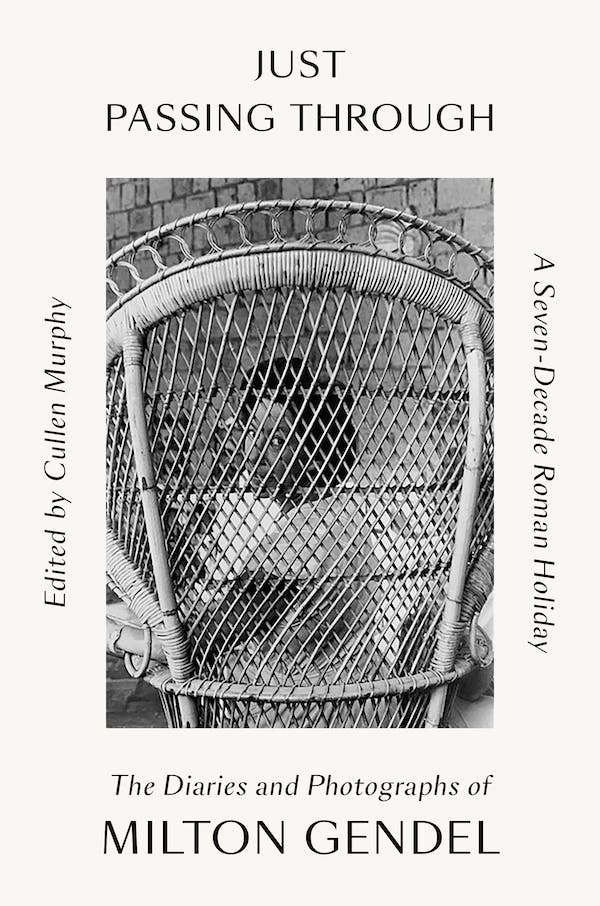
Just Passing Through — A Seven-Decade Roman Holiday: The Diaries and Photographs of Milton Gendel by Milton Gendel, edited by Cullen Murphy. Courtesy of Macmillan.
In 1949, a young Milton Gendel moved from his native New York to Rome for a Fulbright scholarship. The art critic and photographer never looked back, calling the Eternal City home until his death in 2018, just two months shy of his 100th birthday. Now, a selection of his prolific diary entries and photographs offer a glimpse into Gendel’s rarefied world, hobnobbing with everyone from Gore Vidal and Princess Margaret to Mark Rothko and Anaïs Nin. It would read a bit name-droppy if Gendel wasn’t just matter of factly recounting his daily activities. He clearly lived a fascinating life, and his writings and images paint a striking portrait of the rich creative milieu of Rome in the second half of the 20th century.
—Sarah Cascone
The Private Eye in Public Art
By Joyce Pomeroy Schwartz
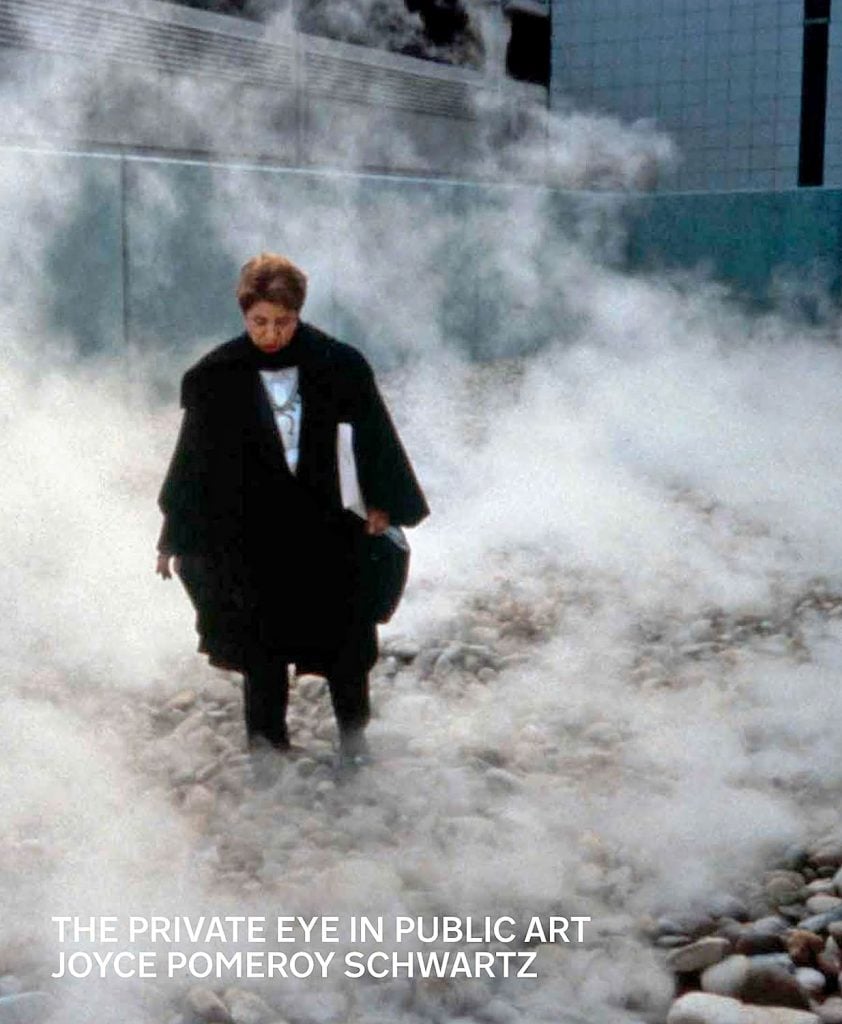
The Private Eye in Public Art by Joyce Pomeroy Schwartz. Courtesy of Oro Editions.
In a work that is part history, part memoir, and part practicum, the author explores Joyce Pomeroy Schwartz’s behind-the-scenes work of integrating public art into the broader concepts of urban revitalization and cultural planning. Beginning when the author was a commissioner of public art at Pace Gallery, the book traces 50 years in which she elevated public works into the realm of museum-quality art, working with artists as their interpreter, advocate, and producer, as well as with committees, businesses, and government bureaucracies. The book shares the stories behind realizing high-profile projects ranging from an ice skating rink and park in Grand Rapids by Maya Lin to Brian Tolle’s Irish Hunger Memorial, and more.
—Eileen Kinsella
Venice: City of Pictures
Martin Gayford
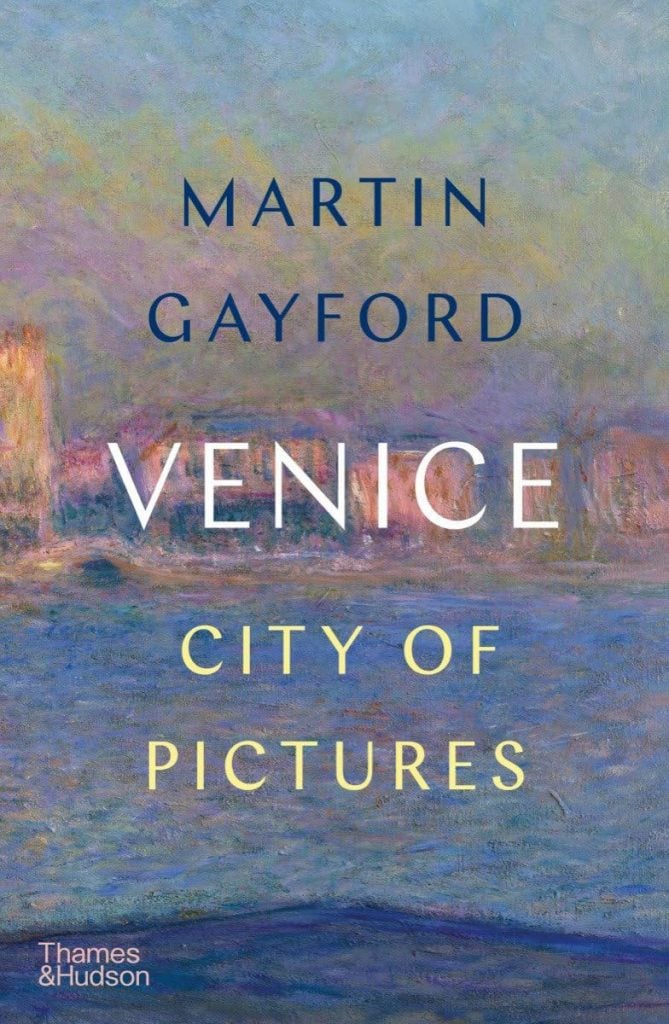
Venice: City of Pictures by Martin Gayford. Courtesy of Thames & Hudson.
From its rich history as a maritime power and magnet for diverse cultures to the central role it played during the Renaissance, Venice continues to enchant, fascinate, and lure hordes of eager tourists each year. Gayford takes readers on a visual journey through the past five centuries of Venice, known as “La Serenissima” (“Most Serene”).
Venice was the city where the medium of oil on canvas became the norm, with artists such as Giorgione, Titian, Tintoretto, and Paolo Veronese all creating their work there. While Venetian views became signatures for local artists like Canaletto and Francesco Guardi, Venice has also been richly represented by outsiders such as William Turner, Claude Monet, and John Singer Sargent.
Inspired while strolling through a Venice Biennale opening, Gayford writes in his introduction: “[H]ere one kind of thing is apt to blend into something else. And everything, even sculpture and architecture, turns into a picture. That is what you find in Venice: images on top of images, views of the town itself, sometimes pictures of pictures. This is a city of pictures.”
—Eileen Kinsella
New Surrealism: The Uncanny in Contemporary Painting
By Robert Zeller
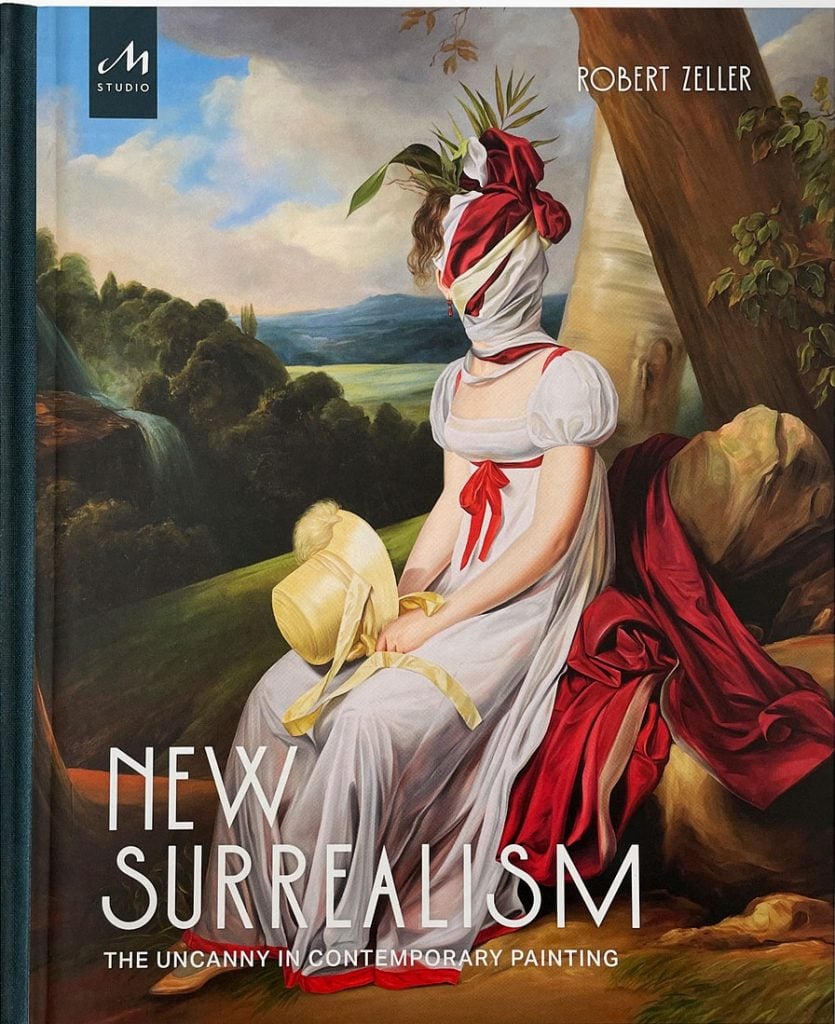
New Surrealism: The Uncanny in Contemporary Painting by Robert Zeller. Courtesy of Phaidon.
Surrealism is back, baby! It’s back again. Or maybe it never left after its last return, whenever that was. Maybe the greatest trick surrealism ever pulled was convincing us it ever left at all. At least that’s what’s suggested in Robert Zeller’s book, which takes stock of Surrealism’s history by looking at its instantiations in the work of painters today—Inka Essenhigh, Rosa Loy, and Anna Weyant, among them. The author makes a compelling case that Surrealism is the most significant art movement of the last 100 years in part by reminding us that, at some point, it stopped being a movement altogether. Now that’s logic that any real Surrealist can get behind.
—Taylor Dafoe
Open Questions: Thirty Years of Writing about Art
By Helen Molesworth
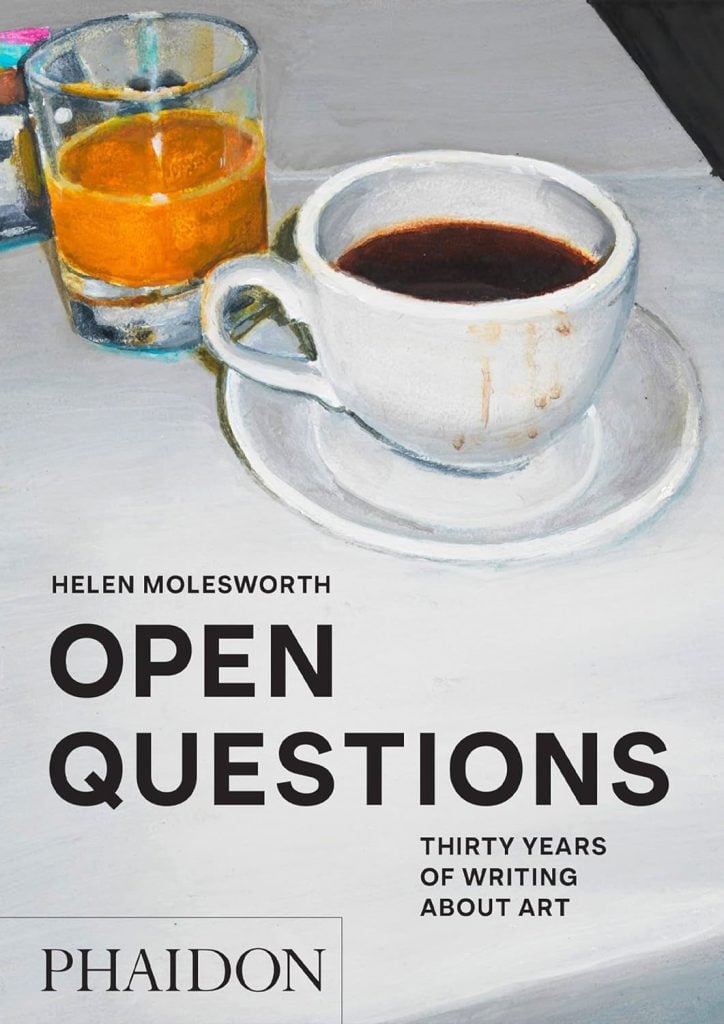
Open Questions: Thirty Years of Writing about Art by Helen Molesworth. Courtesy of Phaidon.
Most of the collected essays in “Open Questions” were written while Helen Molesworth held a series of increasingly high-profile curatorial positions at name-brand museums. But she is working as an independent now, and though she’s freed from the bureaucratic strictures of an institution, she’s also lost some of the power such a position affords. You can feel, in her selection of texts—and the many poignant forewords and postscripts she’s appended onto them—the curator reflecting on the last three decades of her professional life and where it’s led her. These expertly articulated essays tackle specific artists and ideas, but taken together, they coalesce into something bigger: a portrait of a woman who reached the top of a professional mountain, then jumped off. I suspect she’s got even bigger climbs still to come.
—Taylor Dafoe
Forays, Frontiers & Flags
By Joseph Cochran II
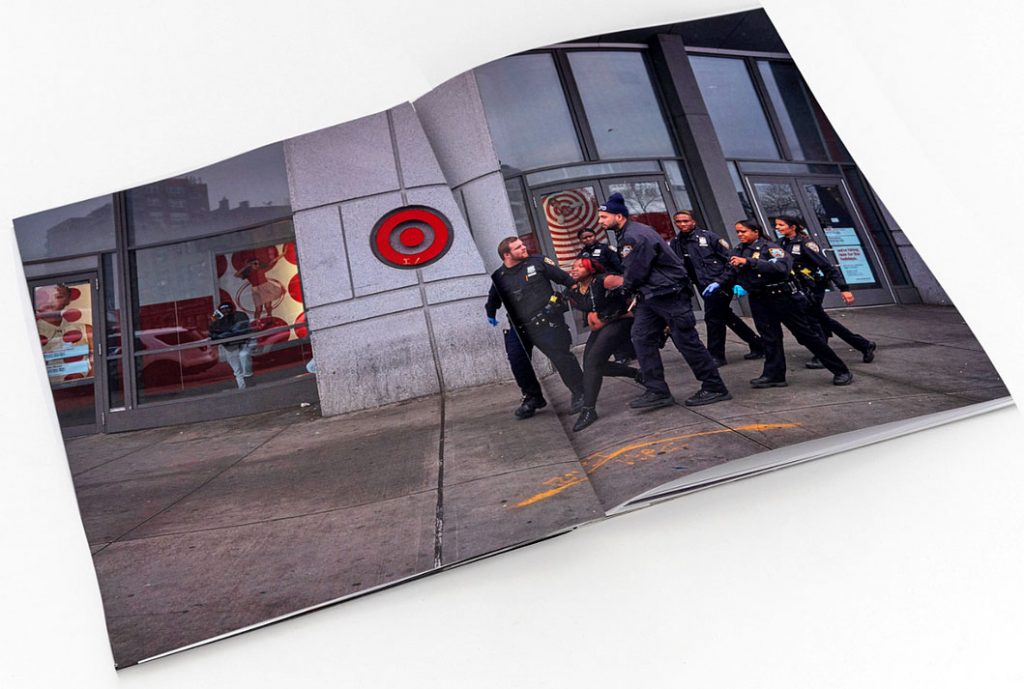
Forays, Frontier and Flags by Joseph Cochrane II. Courtesy of Printed Matter.
Joey Cochran, 33, grew up in East Harlem but was sent to foster care in a NYCHA building in Brownsville, Brooklyn, around the age of nine, the product of two parents he said were “victims and complicit in the war on drugs.” In his early 20s, he dropped out of John Jay College of Criminal Justice. He was later handed his first camera by a friend and, in a span of a few years, experienced the death of his beloved grandmother, a home-invasion robbery, displacement from Hurricane Sandy, and an offer from a friend to move to China to teach English. “I was like, ‘Fuck this communist country. I’m not going there. Are you nuts?’” Cochran recalled in a brief interview. But he did, and he became what he called an “economic migrant,” bouncing from China to North Africa to Europe in pursuit of work—returning to the United States effectively homeless in 2019.
In a new book, Cochran has compiled transcripts of conversations between him and his friends, an excerpt from “Chairman Mao Tse-tung’s Statement Supporting American Negroes,” and interviews he conducted with refugees from North Africa and the Middle East in Europe—in between illuminating photos from hard-to-access places on four continents, including inside the European Parliament. The 152-page book is a testament to Cochran’s will to make his own archive, what he called a necessary expression of powers earned by Black artists in recent years, and the sociopolitical influence on issues like migration and community identity.
—Adam Schrader
Camille Pissarro: The Audacity of Impressionism
By Anka Muhlstein
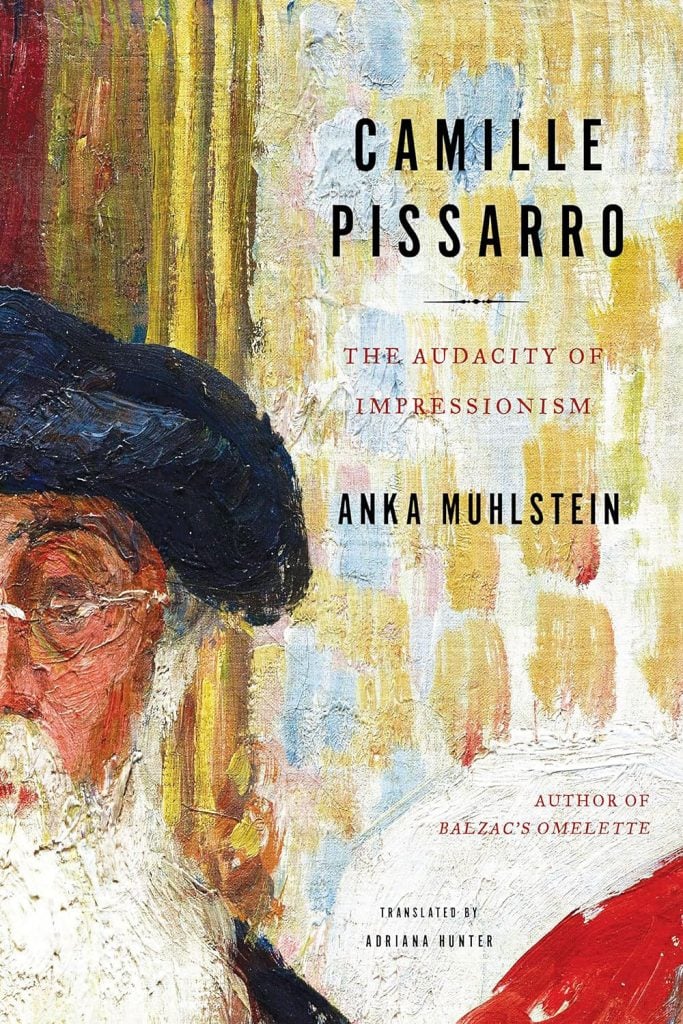
Camille Pissarro: The Audacity of Impressionism by Anka Muhlstein. Courtesy of Other Press.
Even a passing fan of Impressionism is well aware of the great quality and importance of Pissarro’s paintings, but what about the man himself? As it happens, Pissarro’s personal life is fascinating not merely for the very obvious reasons—he was, after all, a protagonist in Paris’s avant-garde artistic milieu—but for his experiences as a Caribbean-born Jewish emigré who moved to France at the age of 25. Though he is remembered for the central role that he played in the course of modern art, Pissarro is shown to us in a light that reflects how he more often felt: an enigmatic outsider.
—Jo Lawson-Tancred
The Sphinx and the Milky Way: Selections from the Journals of Charles Burchfield
Edited by Ben Estes
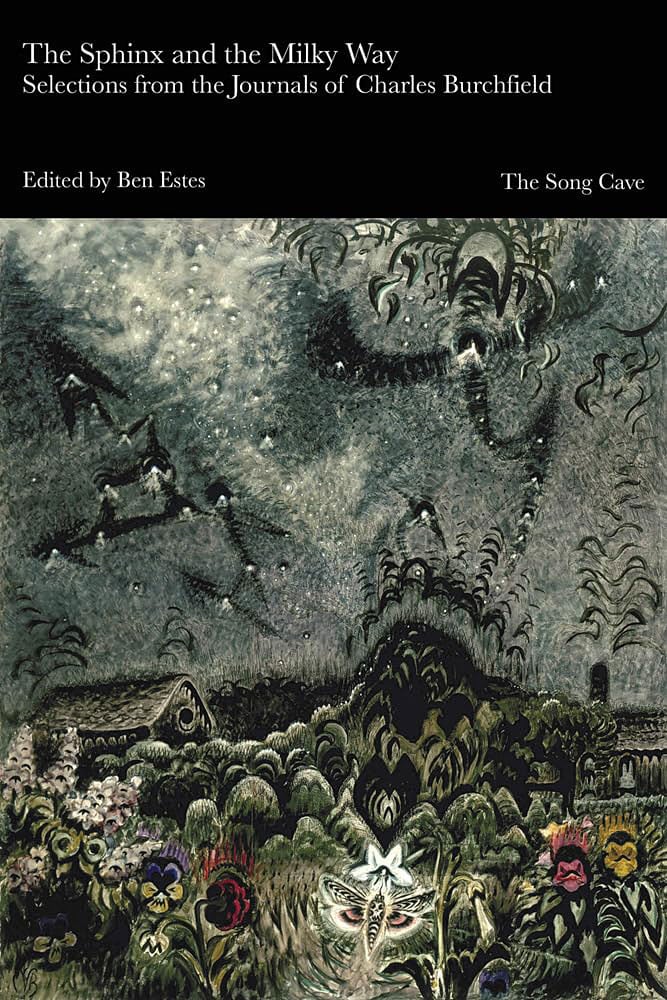
The Sphinx and the Milky Way: Selections from the Journals of Charles Burchfield, edited by Ben Estes. Courtesy of the Song Cave.
First things first: I must admit that I love Charles Burchfield. He is one of American art’s more idiosyncratic and fantastical 20th-century artists and his impassioned, near-mystic renderings of the landscape harken, in my mind, more to medieval manuscript illuminations, in their frenzy, than to might or majesty. Burchfield also kept a journal for some 54 years, which, spanning 72 volumes, forms an intricate, handwritten document that is a dizzying and delightful mix of quasi-spiritual autobiography alongside Burchfield’s observations of the natural world and even technical considerations. The Sphinx and the Milky Way, edited by artist and poet Ben Estes, has separated the wheat from the chaff, offering a refined and insightful selection of Burchfield’s journal entries, which together offer a vivid snapshot into this influential artist’s creative and personal world.
—Katie White
Leonora Carrington: Revelation
By Carlos Martín, Stefan van Raay, Tere Arcq, Naja Rasmussen
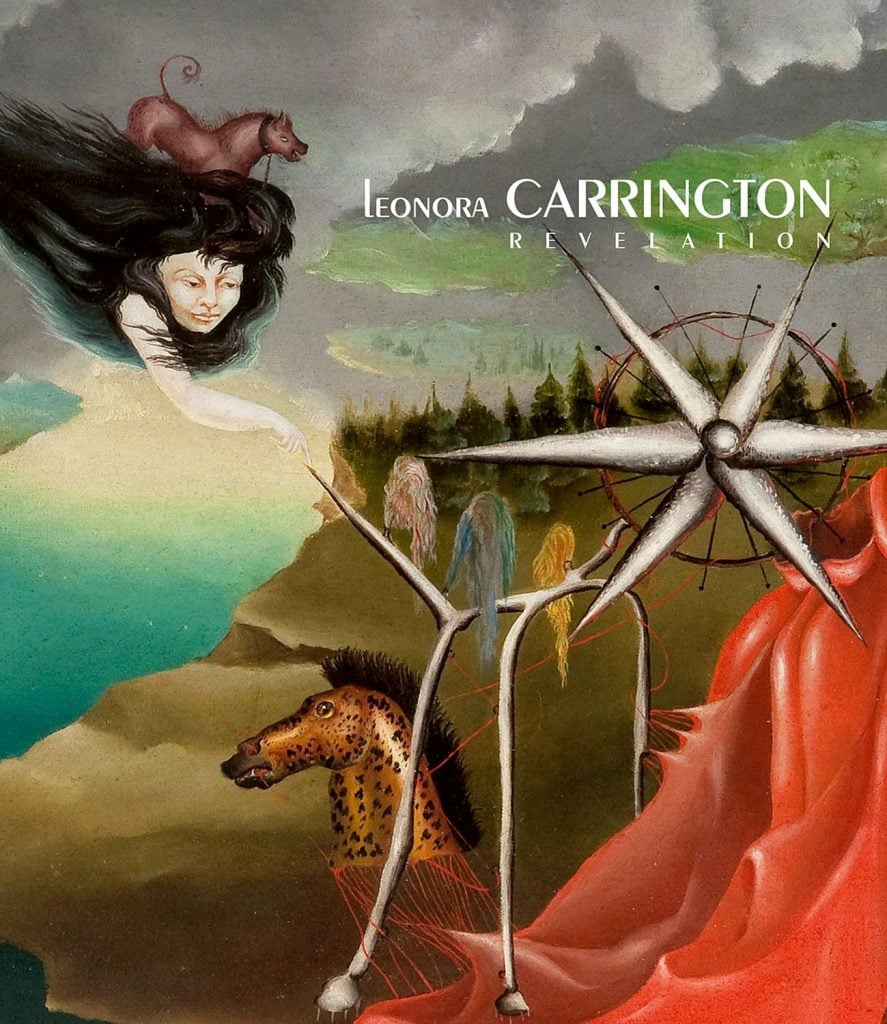
Leonora Carrington: Revelation by Carlos Martín. Courtesy of Atomic Books.
Surrealist painter, poet, and writer Leonora Carrington was long overshadowed by the men in her milieu—most conspicuously by her one-time lover Max Ernst. Thankfully, over the last few years, Carrington’s magical creative world—filled with dreams, witches, and occultist visions—has returned to the popular consciousness. The new energy behind Carrington’s oeuvre could be felt most acutely at the 2022 Venice Biennale, curated by Cecilia Alemani, titled The Milk of Dreams, after a story by the artist. Critical scholarship of the artist, however, has lagged behind this popular enthusiasm, making Leonora Carrington: Revelation a particularly significant title. Startlingly, it is the first overview of Carrington’s career in a decade. Divided into 10 parts, Revelation provides an introduction to Carrington’s paintings, drawings, and tapestries, and unfurls the chronology of her life, while sussing out the major themes and influences at play in her work, as the artist moved from England and across Europe, immigrated to New York, and ultimately blossomed in her adopted homeland of Mexico.
—Katie White
Picture You Dead
By Peter James
Pan Macmillan
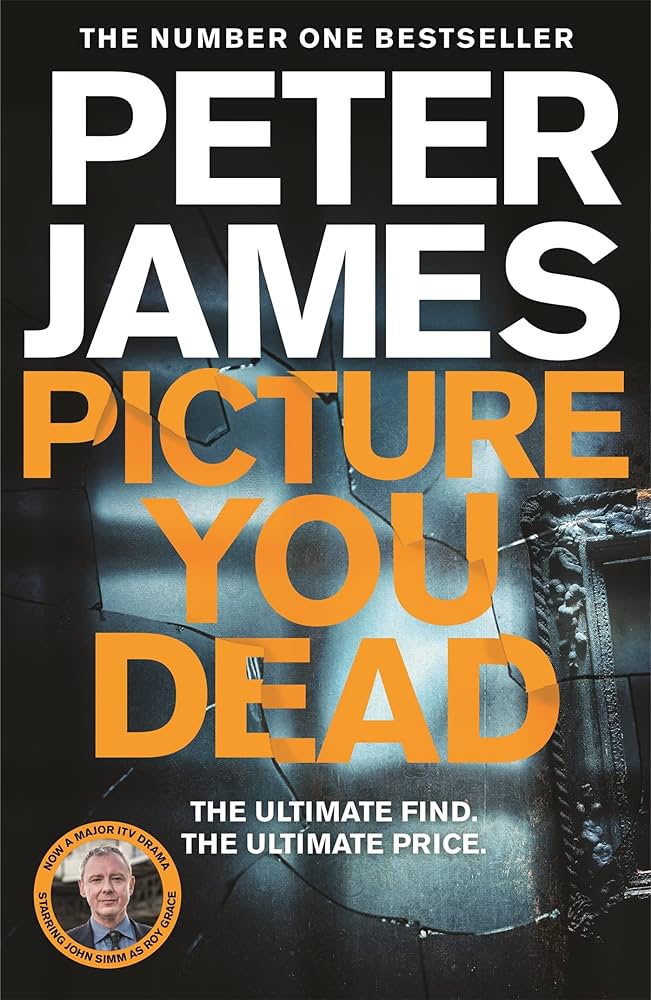
Picture You Dead by Peter James. Courtesy of Pan Macmillan.
I wasn’t familiar with novelist Peter James’s long-running crime series starring detective Roy Grace, but that didn’t stop me from diving into his 18th effort, in which the shadowy side of the art world takes center stage. A long-lost quartet of paintings believed to be the work of Jean-Honoré Fragonard sets the plot in motion—but this isn’t just one of those classic Antiques Roadshow discoveries of an overlooked masterpiece purchased for a pittance at a flea market. Theft, murder, and forgery all quickly come into play. It’s all a bit over the top, but it’s a fun, fast-paced mystery, featuring a villain with an insatiable lust for art history’s forgotten treasures willing to stop at nothing to complete his collection.
—Sarah Cascone
Black Butterflies
By Priscilla Morris
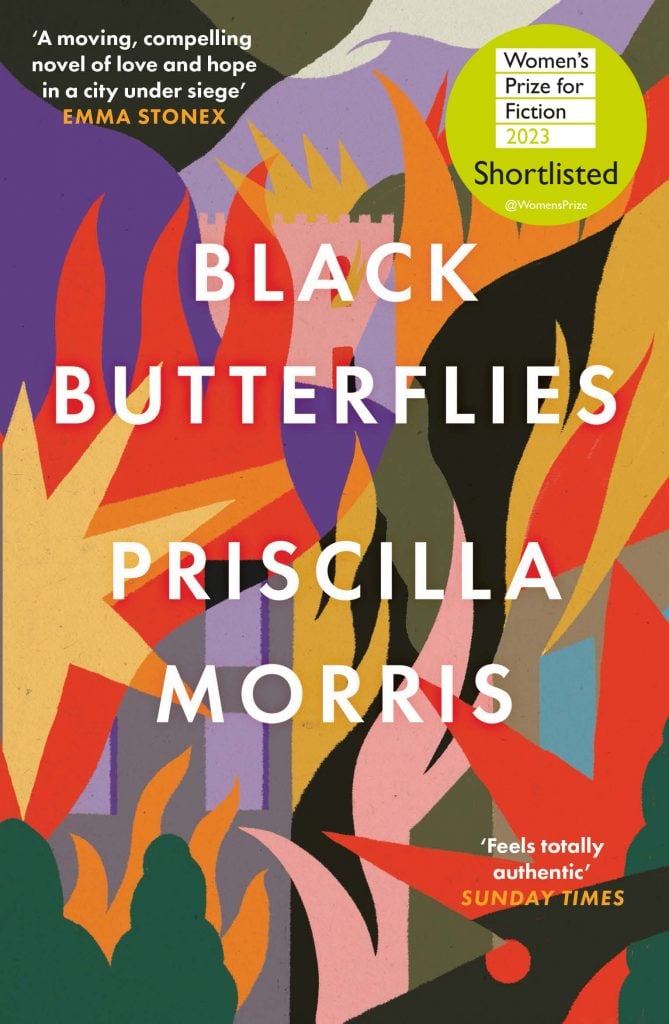
Black Butterflies by Priscilla Morris. Courtesy of Duckworth Books.
This tale of an artist trapped in Sarajevo at the outbreak of the Bosnian War in 1992 is something of a difficult read given current world events. But Priscilla Morris’s beautiful novel, shortlisted for the 2023 Women’s Prize for Fiction, among other honors, offers moments of hope and resilience amid the loss and violence experienced in a city under siege. The story is largely inspired by members of the author’s family who escaped Sarajevo against the odds, including her artist great-uncle Dobrivoje Beljkašić. In the novel, Beljkašić becomes Zora, a painter of bridges who continues to draw strength from her art even as the world she knows crumbles around her.
—Sarah Cascone
Cities of Women
By Kathleen B. Jones
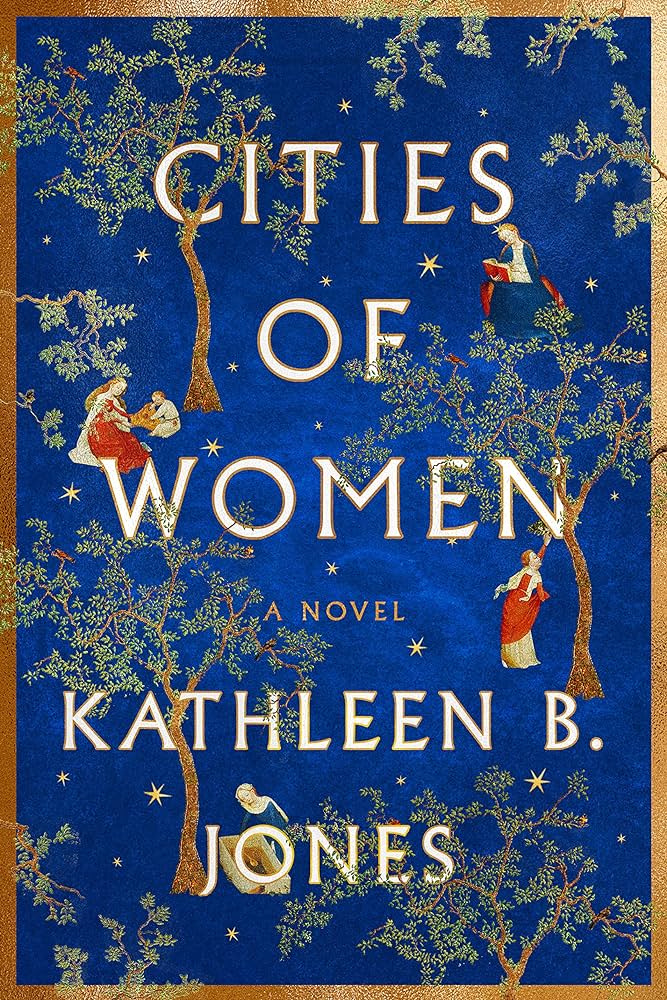
Cities of Women by Kathleen B. Jones. Courtesy of Keylight Books.
There was no way I wasn’t picking up Cities of Women, which tells the story of 21st-century scholar Verity Frazier and her efforts to prove that a skilled illuminator named Anastasia was responsible for the illustrations of Christine de Pizan’s proto-feminist book The Book of the City of Ladies, published around 1405. The story cuts back and forth between Frazier’s research efforts and Anastasia’s life in medieval times, learning and perfecting her craft against the odds. The present-day half of the novel is admittedly weighed down by an unappealing romance rife with lies and irrational jealousy, but Frazier’s quest to track down a great woman artist lost to history remains a compelling plot driver—and a believable theory as to the authorship of the artwork in the original manuscript.
—Sarah Cascone
From the Front Row: Reflections of a Major League Baseball Owner and Modern Art Dealer
By Jeffrey H. Loria
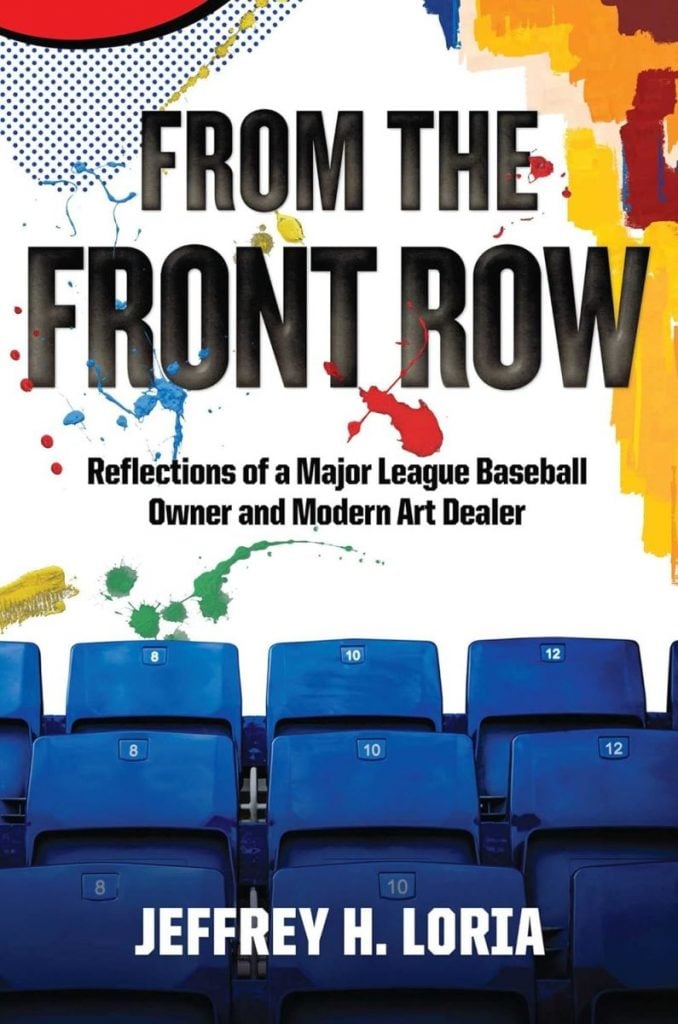
From the Front Row: Reflections of a Major League Baseball Owner and Modern Art Dealer by Jeffrey Loria. Courtesy of Post Hill Press.
As a lifelong baseball fan, I was intrigued to learn that a former MLB team owner who was also a art dealer had written a memoir. It turns out that Jeffrey Loria—who got his start selling original works of art with Sears with actor and art historian Vincent Price—is full of fabulous anecdotes about his encounters with all manner of 20th century art historical greats. There are chapters on Henry Moore, Alberto Giacometti, Niki de Saint Phalle, and many others, and interesting comparisons on spotting artistic and athletic talent. Though Loria brought home a 2003 World Series ring for the Florida Marlins, divisional rivals of my beloved New York Mets, he gets points in my book for managing to defeat the New York Yankees along the way. He also gets in some good digs against former Bronx star Derek Jeter, who ends up becoming one of the Marlins’ next owners, who sadly stripped the team’s ballpark of much of its public art, including its quirky kinetic home run sculpture by Red Grooms.
—Sarah Cascone
More Trending Stories:
Art Dealers Christina and Emmanuel Di Donna on Their Special Holiday Rituals
Stefanie Heinze Paints Richly Ambiguous Worlds. Collectors Are Obsessed
Inspector Schachter Uncovers Allegations Regarding the Latest Art World Scandal—And It’s a Doozy
Archaeologists Call Foul on the Purported Discovery of a 27,000-Year-Old Pyramid
The Sprawling Legal Dispute Between Yves Bouvier and Dmitry Rybolovlev Is Finally Over





